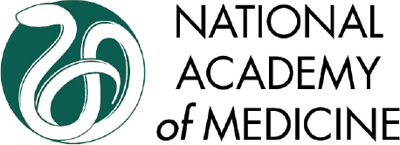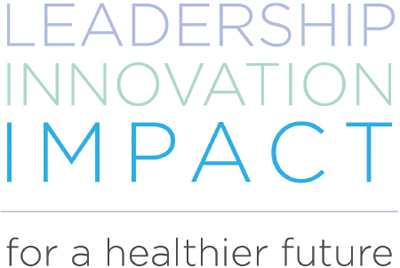THE LEARNING HEALTH SYSTEM SERIES
Generative Artificial Intelligence in Health and Medicine
Opportunities and Responsibilities for Transformative Innovation
Thomas Maddox, Dianne Babski, Peter Embí, Jackie Gerhart, Jennifer Goldsack, Ravi Parikh, and Troy Sarich
Sunita Krishnan and Audrey Elliott, Editors

WASHINGTON, DC
NAM.EDU

NATIONAL ACADEMIES PRESS 500 Fifth Street, NW Washington, DC 20001
This publication has undergone peer review according to procedures established by the National Academy of Medicine (NAM). Publication by the NAM signifies that it is the product of a carefully considered process and is a contribution worthy of public attention but does not constitute an endorsement of conclusions and recommendations by the NAM. The views presented in this publication are those of individual contributors and do not represent formal consensus positions of the authors’ organizations; the NAM; or the National Academies of Sciences, Engineering, and Medicine.
This publication was completed with support from the Doris Duke Foundation and the Gordon and Betty Moore Foundation. Any opinions, findings, or conclusions expressed in this publication do not necessarily reflect the views of any organization or agency that provided support for this publication.
International Standard Book Number-13: 978-0-309-73369-4
International Standard Book Number-10: 0-309-73369-7
Digital Object Identifier: https://doi.org/10.17226/28907
Copyright 2025 by the National Academy of Sciences. National Academies of Sciences, Engineering, and Medicine and National Academies Press and the graphical logos for each are all trademarks of the National Academy of Sciences. All rights reserved.
Printed in the United States of America.
Suggested citation: National Academy of Medicine. 2025. Generative Artificial Intelligence in Health and Medicine: Opportunities and Responsibilities for Transformative Innovation. Krishnan, S., and A. Elliott, editors. NAM Special Publication. Washington, DC: National Academies Press. https://doi.org/10.17226/28907.
“Knowing is not enough; we must apply. Willing is not enough; we must do.”
—GOETHE


ABOUT THE NATIONAL ACADEMY OF MEDICINE
The National Academy of Medicine is one of three Academies constituting the National Academies of Sciences, Engineering, and Medicine (the National Academies). The National Academies provide independent, objective analysis and advice to the nation and conduct other activities to solve complex problems and inform public policy decisions. The National Academies also encourage education and research, recognize outstanding contributions to knowledge, and increase public understanding in matters of science, engineering, and medicine.
The National Academy of Sciences was established in 1863 by an Act of Congress, signed by President Lincoln, as a private, nongovernmental institution to advise the nation on issues related to science and technology. Members are elected by their peers for outstanding contributions to research. Dr. Marcia McNutt is president.
The National Academy of Engineering was established in 1964 under the charter of the National Academy of Sciences to bring the practices of engineering to advising the nation. Members are elected by their peers for extraordinary contributions to engineering. Dr. John L. Anderson is president.
The National Academy of Medicine (formerly the Institute of Medicine) was established in 1970 under the charter of the National Academy of Sciences to advise the nation on issues of health, health care, and biomedical science and technology. Members are elected by their peers for distinguished contributions to medicine and health. Dr. Victor J. Dzau is president.
Learn more about the National Academy of Medicine at NAM.edu.
GENERATIVE ARTIFICIAL INTELLIGENCE IN HEALTH AND MEDICINE
Author Group
THOMAS MADDOX (Chair), BJC HealthCare/Washington University School of Medicine
DIANNE BABSKI, National Institutes of Health
PETER EMBÍ, Vanderbilt University Medical Center
JACKIE GERHART, Epic
JENNIFER GOLDSACK, Digital Medicine Society
RAVI PARIKH, Emory University
TROY SARICH, Johnson & Johnson
NAM Staff
Development of this publication was facilitated by contributions of the following current and former NAM staff, under the guidance of J. Michael McGinnis, Leonard D. Schaeffer Executive Officer and Executive Director of the NAM Leadership Consortium:
SUNITA KRISHNAN, Senior Program Officer
AUDREY ELLIOTT, Associate Program Officer
ANNIE MURFF, Research Associate
STEPHANIE STAN, Research Associate (June 2023–March 2024)
DISCLOSURE OF CONFLICTS OF INTEREST
See Author Information.
CONSULTATIVE EXPERTS
The author group would like to express its sincere gratitude to the following experts, who were called upon to share their views on emerging applications, opportunities, and risks of generative artificial intelligence for health and medicine. Their insights and knowledge have informed the final form of this publication.
PETER LEE, Microsoft
KENNETH MANDL, Harvard University
This page intentionally left blank.
REVIEWERS
This NAM Special Publication was reviewed in draft form by individuals chosen for their diverse perspectives and technical expertise. The purpose of this independent review is to provide candid and critical comments that will assist the National Academy of Medicine in making the publication as sound as possible and to ensure that it meets the institutional standards for quality, objectivity, and evidence. The review comments and draft manuscript remain confidential to protect the integrity of the deliberative process.
The author group thanks the following individuals for their review of this report:
DAVID W. BATES, Harvard University
DAVID C. CLASSEN, University of Utah
WILLIAM W. STEAD, Vanderbilt University
The reviewers listed above provided many constructive comments and suggestions, but they were not asked to endorse the publication’s content and did not see the final draft before it was published.
Review of this publication was overseen by PAUL C. TANG, Stanford University School of Medicine. Responsibility for the final content rests entirely with the author group and the National Academy of Medicine.
This page intentionally left blank.
This page intentionally left blank.
FIGURES AND TABLES
FIGURES
1-1 The history of artificial intelligence use in health care
4-1 Large language model application readiness cadence
TABLES
5-1 Similarities in Monitoring Generative and Predictive/Analytical Artificial Intelligence
5-2 Differences in Monitoring Generative and Predictive/Analytical Artificial Intelligence
This page intentionally left blank.
PREFACE
The fundamental goal of modern health care is to enhance the well-being of individuals and populations, ensuring that each person has the opportunity to achieve their full health potential. Today, we stand at the threshold of a technological revolution that has the potential to transform health and medicine as we know it: the rise of generative artificial intelligence (AI) and large language models (LLMs). These innovations hold promise for improving health care delivery, advancing medical research, and augmenting the capacity of clinicians to provide personalized care at an unprecedented scale.
The introduction of these powerful tools comes at a time when the health system faces significant challenges, including workforce shortages, inequities in care access, rising costs, and the burden of navigating increasingly complex terrain. As we integrate generative AI into this landscape, the potential for both breakthrough innovation and unintended consequences demands careful consideration. These technologies, while transformative, also raise concerns about privacy, bias, and the role of human judgment in clinical decision making.
In response to the opportunities and risks posed by generative AI, the National Academy of Medicine’s (NAM’s) Digital Health Action Collaborative convened a workshop in the fall of 2023 to enhance common understanding among health professionals and health system leaders, technology developers, and government agencies of the nature and health care implications of LLMs and generative AI. Leading experts across clinical medicine, biomedical research, AI ethics, and health policy were engaged to assess the future impact of generative AI on health and medicine. The discussions focused on how LLMs can augment clinical workflows, reduce administrative burden, support diagnostic decision making, and empower patients through more accessible, tailored health information. At the same time, participants examined the ethical, legal, and regulatory frameworks needed to ensure these technologies are used responsibly and equitably.
This NAM Special Publication, Generative Artificial Intelligence in Health and Medicine: Opportunities and Responsibilities for Transformative Innovation, addresses both the promise and the potential unintended consequences related to the use of generative AI in health, medicine, and biomedical science. It highlights how LLMs might transform all aspects of care, from patient triage and clinical documentation to drug discovery and public health analytics. Yet, it also emphasizes the importance of human oversight, transparency, and ensuring that AI-driven solutions are free from bias and accessible to all populations.
Generative AI will not replace health professionals, but it will reshape their roles, enabling them to focus on the aspects of care that require empathy, creativity, and complex decision making. By enhancing professional education, addressing workforce needs, and reimagining patient engagement, this publication offers a roadmap for ensuring that the integration of generative AI in health and medicine benefits all stakeholders—patients, providers, and the broader health ecosystem.
As part of the NAM’s continued commitment to advancing equitable and innovative health solutions, we look forward to supporting this transformative shift and working with stakeholders across sectors to ensure that the future of health and medicine is one in which technology best serves humanity, advancing both individual well-being and the health of people everywhere.
| J. Michael McGinnis, MD, MPP | Victor Dzau, MD |
| Leonard D. Schaeffer Executive Officer | President |
| National Academy of Medicine | National Academy of Medicine |
ACRONYMS AND ABBREVIATIONS
| AI | artificial intelligence |
| CDS | clinical decision support |
| DT | digital twin |
| EHR | electronic health record |
| EU | European Union |
| FDA | U.S. Food and Drug Administration |
| GenAI | generative AI |
| IST | in silico trial |
| LHS | Learning Health System |
| LLM | large language model |
| ML | machine learning |
| NAM | National Academy of Medicine |
| WHO | World Health Organization |
This page intentionally left blank.

















